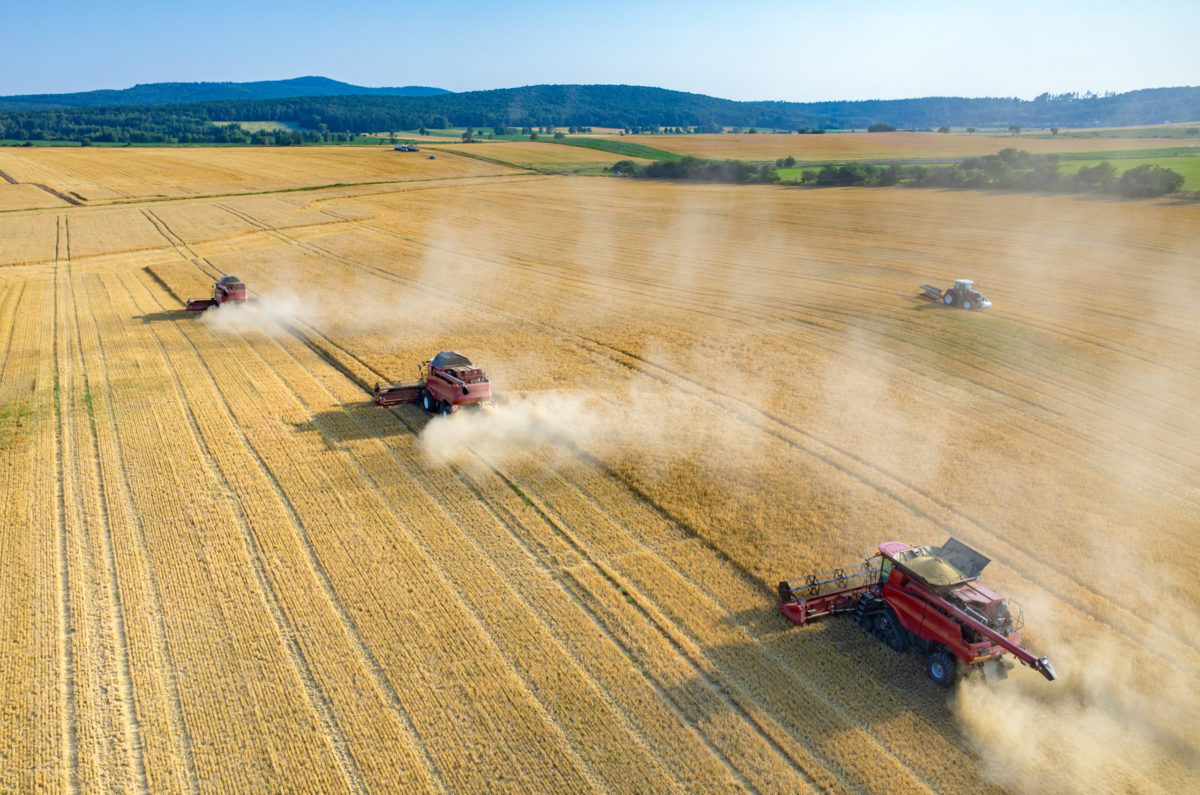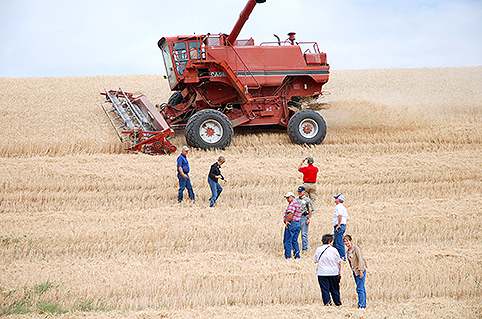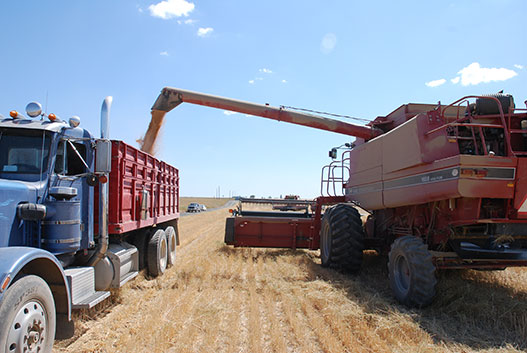Unlike the Midwest where wheat farmers often depend on independent combine crews to harvest their fields, most farmers in Eastern Washington own their own combines—or two or three—in order to be as efficient as possible.
Getting the crop in the bin is the last step in a long process with a fickle partner: Mother Nature.
Occasionally, when rain falls during harvest, wheat kernels begin to germinate while standing in the field. If the rain continues long enough, this can lead to pre-harvest sprout and result in stiff discounts. That’s why speed is of the essence during harvest.



